An insider tip–
“La Huasteca” is the former settlement area of the Huasteca indigenous civilization. The region stretches across the mountainous east and the Sierra from the state of San Luis Potosí, the coastal area in the south of the state of Taumalipas, the north from the state of Veracruz and smaller regions belonginig to the states of Hidalgo and Querétaro.
The area in the state of San Luis Potosí is called “La Huasteca Potosina” and offers many natural attractions. The beautiful landscape captivates the soul with lush vegetation in tropical rainforests, rushing rivers and spectacular waterfalls as well as caves and deep canyons.
The Huasteca does not have many tourists and still is considered an insider tip. Fortunately, I was made aware of this by a simple Facebook event. The same organization with which I went to Michoacán on the “Dia de los Muertos” organized a 3-day excursion and it was clear to me again that I really wanted to be involved.
I didn’t really know what to expect when I began, but I certainly was not disappointed! Our adventure began in Querétaro at midnight, so we spent the first night on the bus and slept in the morning until our first stop – the “Puente de Dios” (“Bridge of God”). We hiked through the stunning natural environment until arriving at a steep staircase leading down to a striking blue shimmering water hole. The lagoon is completely surrounded by lush rainforest, vertical cliffs and incredible waterfalls. For us, this also meant jumping into the cool water! If you did not dare to do so, there is also a narrow path to a cave entrance where the river leads you below the Puente de Dios and into the peaceful, natural swimming pool. The environment is really fantastic, almost magical. The waterfalls, the crystal clear water and the lush green vegetation invite you to dream.
After this adventurous experience, we continued to the surrealistic “castle” of the English artist Sir Edward James. He fulfilled his lifelong dream in the rainforest of the Huasteca Potosina, in the mountain village of Xilitla, and his life’s work was born, one of the largest and little-known artistic monuments of Surrealism. Over a period of 20 years, more than 36 bizarre sculptures and structures were created, embedded in a beautiful, natural environment in the tropical rainforest of Xilitla. The perfect backdrop for very special photos!
In the evening we arrived in our hotel with a pool after a successful first day and ended the evening nicely.
The next day we had the choice between white water rafting or relaxing and swimming. Of course I chose white water rafting! At first I was a little afraid of it, but then my thirst for adventure and my curiosity increased! After a short safety briefing, we were divided into groups of seven people plus companions and then began. The trip on the Rio Tampaon river started smoothly which gave our companion the time to teach us the different rowing commands. We were also shown how we can get someone back into the boat from the water. We just didn’t know that we would have to apply this knowledge later. It then got pretty wild and our boat collided with another, with some of us (including me, of course) falling into the water. Those who managed to stay in the boat immediately helped us out of the water, just as we had learned before. So it wasn´t so bad.
Later on, we reached a point where we had to get out and walk for a bit. At the end of the path another 3 m high waterfall was waiting for us to jump off. Then we got into another rubber boat. The whole thing was so fun that I don’t even know how long we were on the road or water as it were.
From there, we continued to the “Cascadas de Micos” which means “waterfalls of Micos” and where a jump of 8m awaited us. The Rio Tamasopo River forms a series of several terraces with water basins and waterfalls, from which you have to jump in order to get back to the top. In the beginning we ran to the highest lake and then jumped into the lower natural pools and continued swimming to the next waterfall. There were always guides on the edges who gave us support and made sure that nothing happened. I was really looking forward to the 8m high waterfall and had a lot of fun jumping from it. It didn’t take as much overcoming as I thought before because you could slowly approach the altitude beforehand.
The third and last day was a to visit the Tamul waterfalls. We set off on a sporty, paddle boat trip to the waterfall, up the Rio Tampaón River. Paddling through the beautiful landscape and an impressive gorge we came to the water masses of the Rio Gallinas, which form the Tamul waterfall and which spectacularly plunge down the Rio Tampaón for around 100m. Once there, we climbed a stone to take a few souvenir photos before we drifted down the river. Before we began the long drive home, we visited cave surrounded by water for a short swim.
All in all, it was three really successful days! I tried a lot of new things, experienced beautiful nature and would recommend it to anyone who has the opportunity and is a little adventurous!


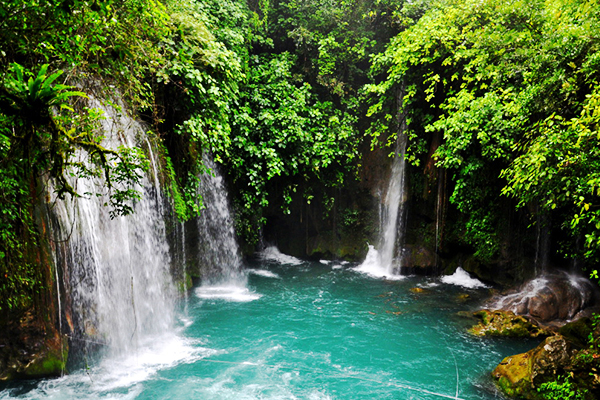
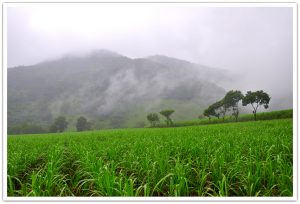
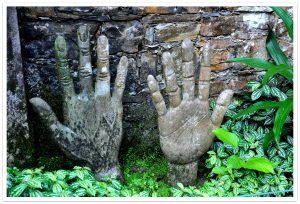
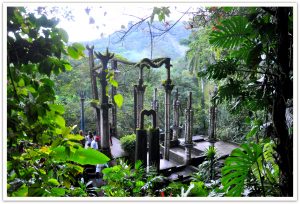
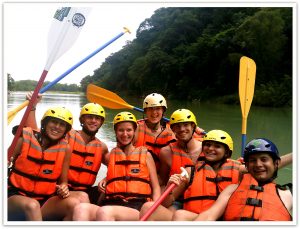
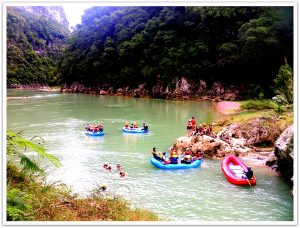
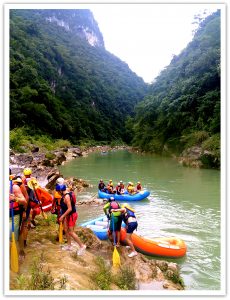
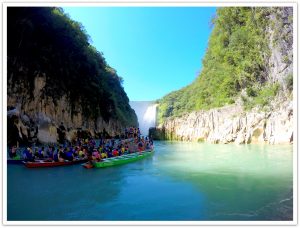
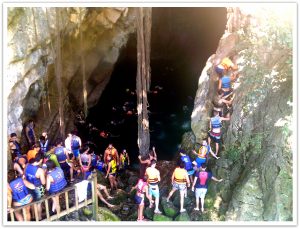

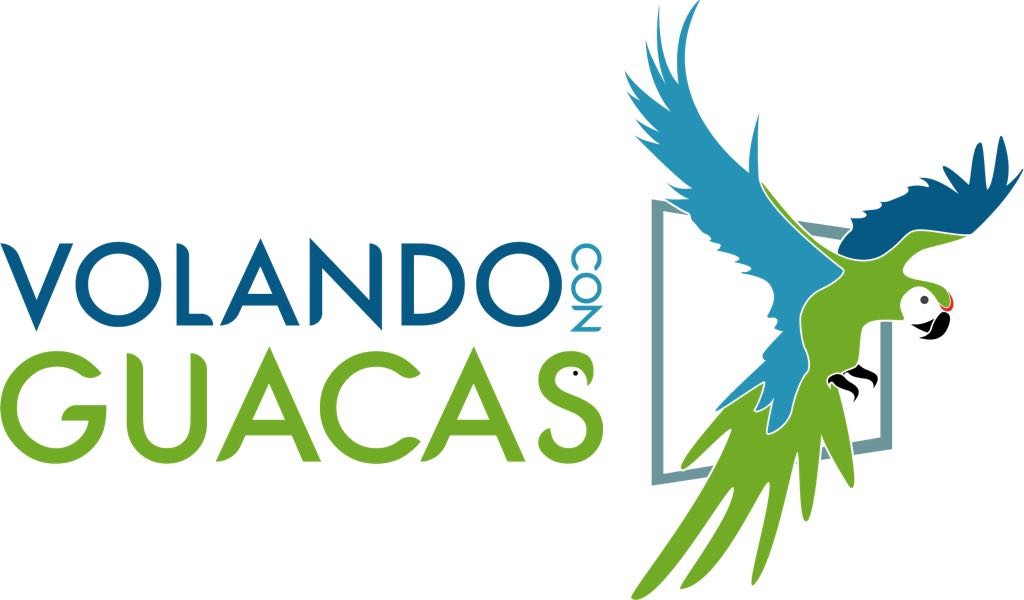
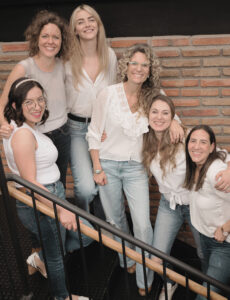
Comments